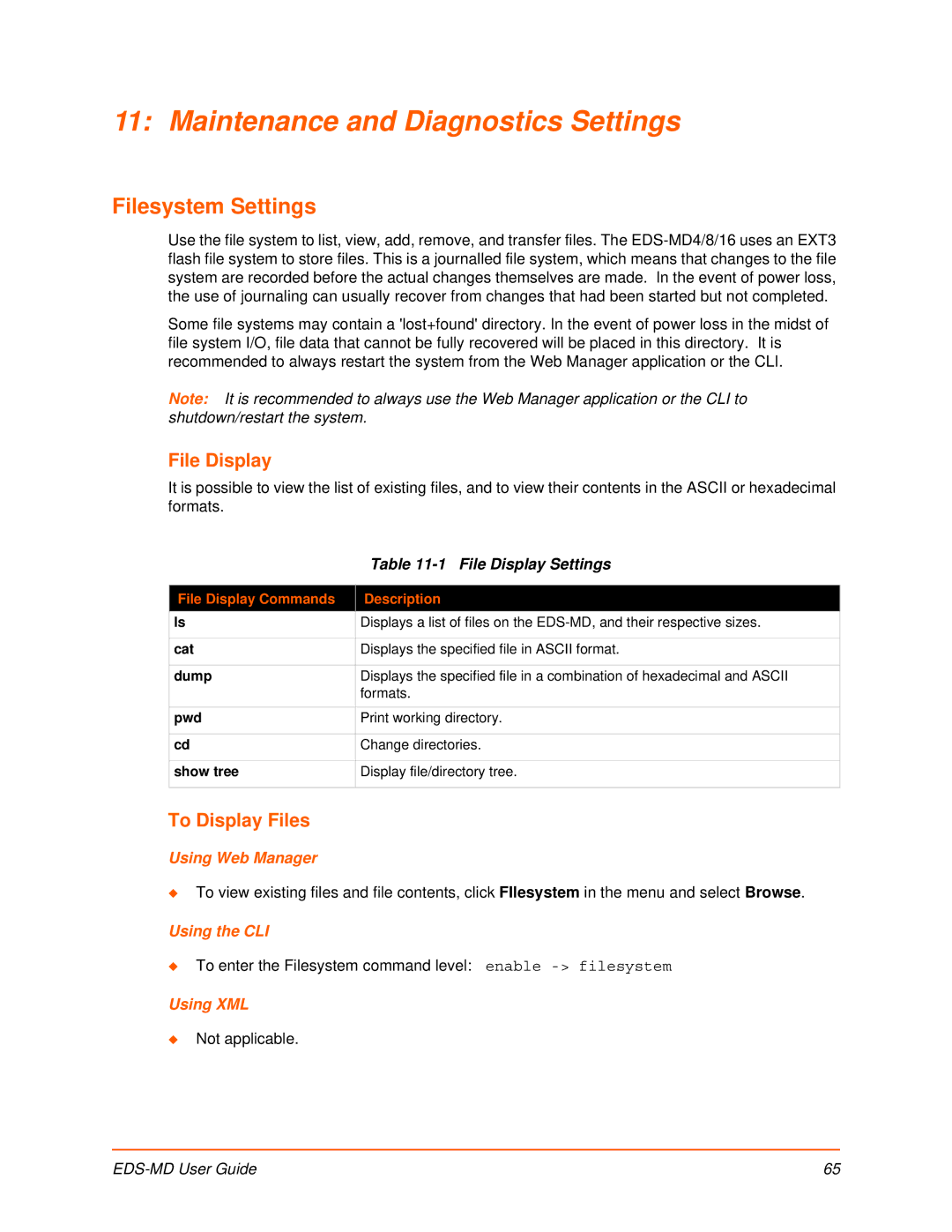11: Maintenance and Diagnostics Settings
Filesystem Settings
Use the file system to list, view, add, remove, and transfer files. The
Some file systems may contain a 'lost+found' directory. In the event of power loss in the midst of file system I/O, file data that cannot be fully recovered will be placed in this directory. It is recommended to always restart the system from the Web Manager application or the CLI.
Note: It is recommended to always use the Web Manager application or the CLI to shutdown/restart the system.
File Display
It is possible to view the list of existing files, and to view their contents in the ASCII or hexadecimal formats.
| Table |
|
|
File Display Commands | Description |
ls | Displays a list of files on the |
|
|
cat | Displays the specified file in ASCII format. |
|
|
dump | Displays the specified file in a combination of hexadecimal and ASCII |
| formats. |
|
|
pwd | Print working directory. |
|
|
cd | Change directories. |
|
|
show tree | Display file/directory tree. |
|
|
To Display Files
Using Web Manager
To view existing files and file contents, click FIlesystem in the menu and select Browse.
Using the CLI
To enter the Filesystem command level: enable
Using XML
Not applicable.
| 65 |
